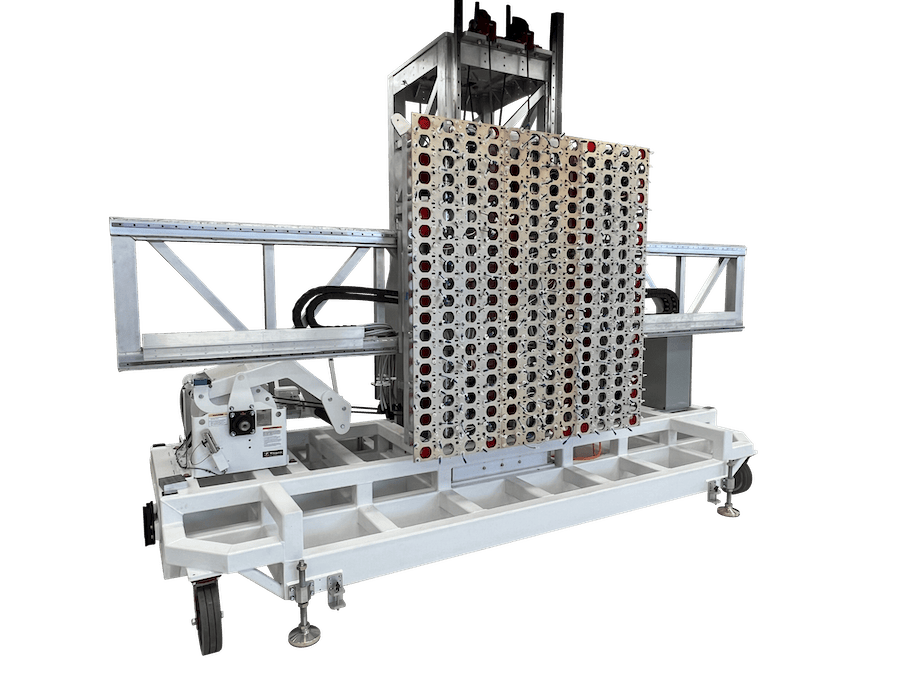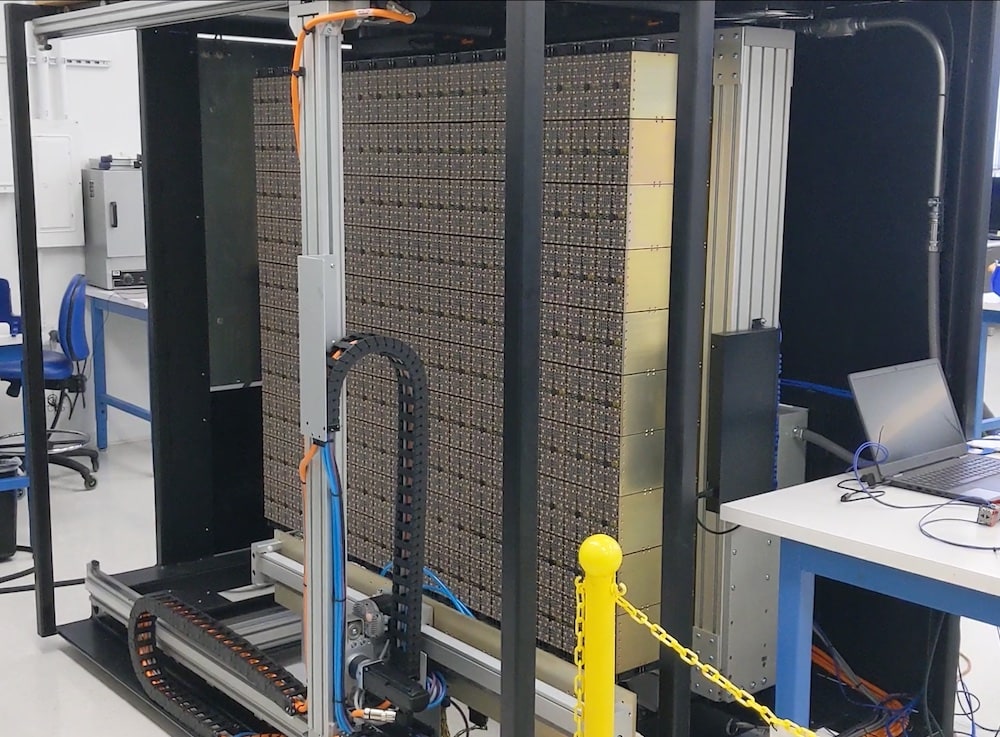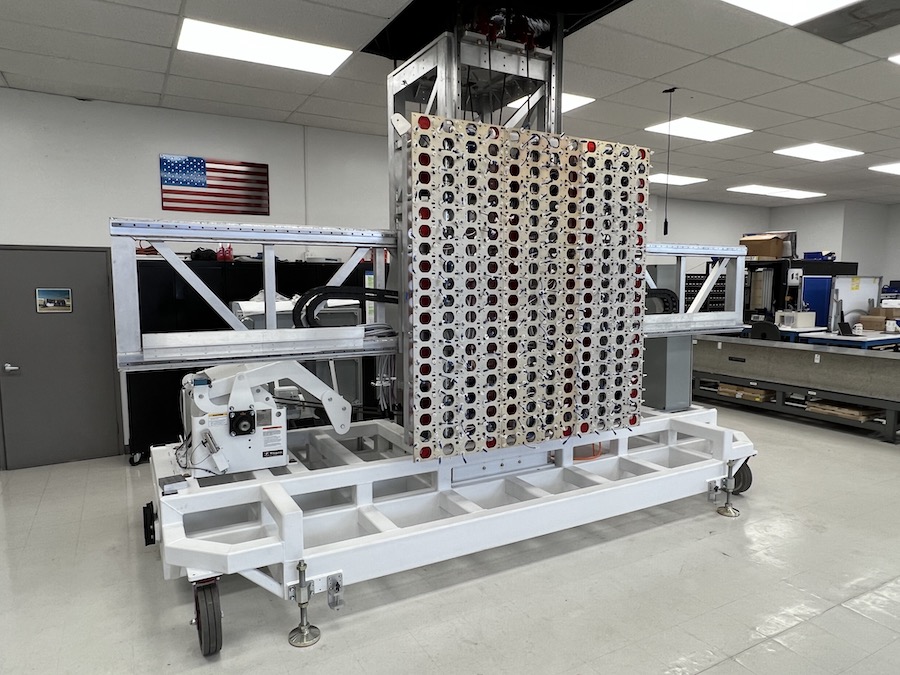Scalable to Any Size Wing or Panel
pLEDss Supports Large Panels
Angstrom Designs’ products and services are trusted by









Large-Area Testing
pLEDss enables large-area testing of circuits up to and above multiple square meters.
pLEDss can tile up LED heads to illuminate areas of any size. If more beam area is required, add more pLEDss heads as needed. Some customers size our frames for the largest panel they may have in the future and purchase heads for their current needs. This future-proofs beam size within today's budget.
There is no performance penalty for increasing beam size. Solar simulation metrics do not degrade with area, as happens in some large-area solar simulators.
See how many pLEDss heads you need to measure your largest panel with our grid calculator:



Support Frames for Any Size
pLEDss has standard frames to support the pLEDss heads for the most common size beam sizes. Custom sized frames are available for huge or unconventional test needs.
Standard large-area frames support up to 2.08 by 1.75-meter beams using 264 pLEDss heads. Standard sizes scale down to 0.52 by 0.54-meter beams using 24 pLEDss heads, with many standard sizes in between. For smaller beams, see our other standard frames.
For larger beams, custom frames are available to meet unique panel testing needs.

Class AAA for Every Junction
pLEDss heads have full spectral control to current match junctions for cells from single junction up to 6 junctions. pLEDss heads have spatial control to achieve Class A spatial uniformity without mirrors or integrating spheres. pLEDss temporal stability is excellent, also exceeding Class A performance.
Many simulators are unable to meet the demands of multi-junction cells. Many traditional solar simulatators give degraded performance for large areas. Large arrays of pLEDss heads maintain best-in-class performance for every junction at any size.



Large-Area Spatial Non-Uniformity
pLEDss gives excellent spatial non-uniformity, including areas over 1 square meter.
Independent spatial control of each LED allows performance beyond Class A +/-2% without integrating spheres or mirrors. This enables excellent spatial uniformity that does not degrade with increasing area. Area degradation is common in many heritage solar simulators, with spatial uniformity falling below Class A for areas above 1 square meter.
Angstrom Designs has substituted advanced calibration and control methods for integrating spheres and mirrors to achieve best-in-class uniformity. This reduces hardware costs and enables large area solar simulation with performance equal to small-area illumination.

Trusted To Build Huge Systems
pLEDss was selected to test NASA's Artemis program Power and Propulsion Element (PPE).
NASA's flagship Artemis program needed the highest test fidelity to measure its huge PPE wings. Because of the huge size of the wings and the advanced four-junction solar cells, NASA selected pLEDss for testing.
NASA gained many additional benefits in this decision, including a much smaller cleanroom footprint than Xenon-lamp flash systems and huge-area Class A spatial uniformity.



Standard and Custom Smaller Frames
Smaller-area frames are standard, both as a stand-alone table with enclosure or as a small desktop frame. Custom frames allow maximum flexibility to meet unique testing needs.
Standard small-area frames support single cell testing using one pLEDss head up to 0.5 by 0.5-meter beams using 24 pLEDss heads. These frames are available in free-standing table or bench-top formats.
These smaller frames also bring the power and capabilities of pLEDss. Larger standard and custom sizes are also available in these formats.

Same Spectrum for Large- and Small-Areas
Match solar simluator tooling for large and small area tools.
pLEDss can do large- and small-area testing. This allows pLEDss to be a common toolset in testing ranging from single cell R&D to small coupon qualification testing to large panel manufacturing testing.
This continuity standardizes tooling, test data and analysis to ease scale-up from cell R&D to manufacturing.



Fully Automated for Manufacturing Control
All pLEDss systems are fully automated, so every pLEDss can be controlled by a central manufacturing computer.
pLEDss has a full TCP command set, allowing full control by manufacturing computers. This enables 24/7 pLEDss operation for automated manufacturing. The TCP interface has high-level commands to fully leverage the full capabilities of pLEDss, and low-level commands that allow access to the details of pLEDss hardware.
pLEDss has been integrated into multiple factories to improve and automation solar cell and panel production.
Space Simulator Comparison
| pLEDss - LED | Modified Terrestrial LED | Pulsed Xenon | Continuous Lamp | |
|---|---|---|---|---|
| Measures large area panels, modules and wings | yes | no | yes | no |
| Large systems standard | yes | no | yes | no |
| Better than Class AAA for every junction for large area | yes | no | limited | no |
| Excellent spatial non-uniformity at large areas, including > 1 sq. meter | yes | no | limited | no |
| Trusted to by NASA to test Artemis PPE | yes | no | no | no |
| Small Frames too | yes | limited | no | yes |
| Same spectrum for large and small area testing | yes | limited | no | yes |
| Fully automated systems controlled by a manufacturing computer | yes | limited | no | no |